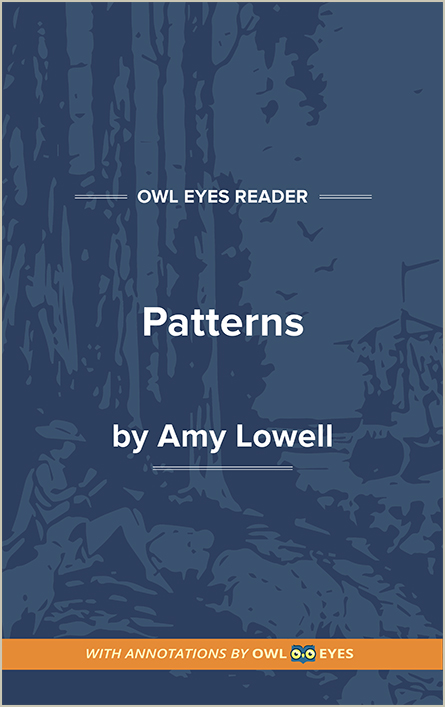Analysis Pages
Vocabulary in Patterns
Vocabulary Examples in Patterns :
Patterns
🔒"Christ..." See in text (Patterns)
"Boned and stayed...." See in text (Patterns)
"whim..." See in text (Patterns)
"sen’night..." See in text (Patterns)
"swoon..." See in text (Patterns)
"Bewildered..." See in text (Patterns)
"crumpled..." See in text (Patterns)
"As they please...." See in text (Patterns)
"stain..." See in text (Patterns)
"I sink..." See in text (Patterns)
"train..." See in text (Patterns)
"powdered hair..." See in text (Patterns)
"softness..." See in text (Patterns)
"brocaded..." See in text (Patterns)
"daffodils..." See in text (Patterns)
"thrift..." See in text (Patterns)
"figured..." See in text (Patterns)

